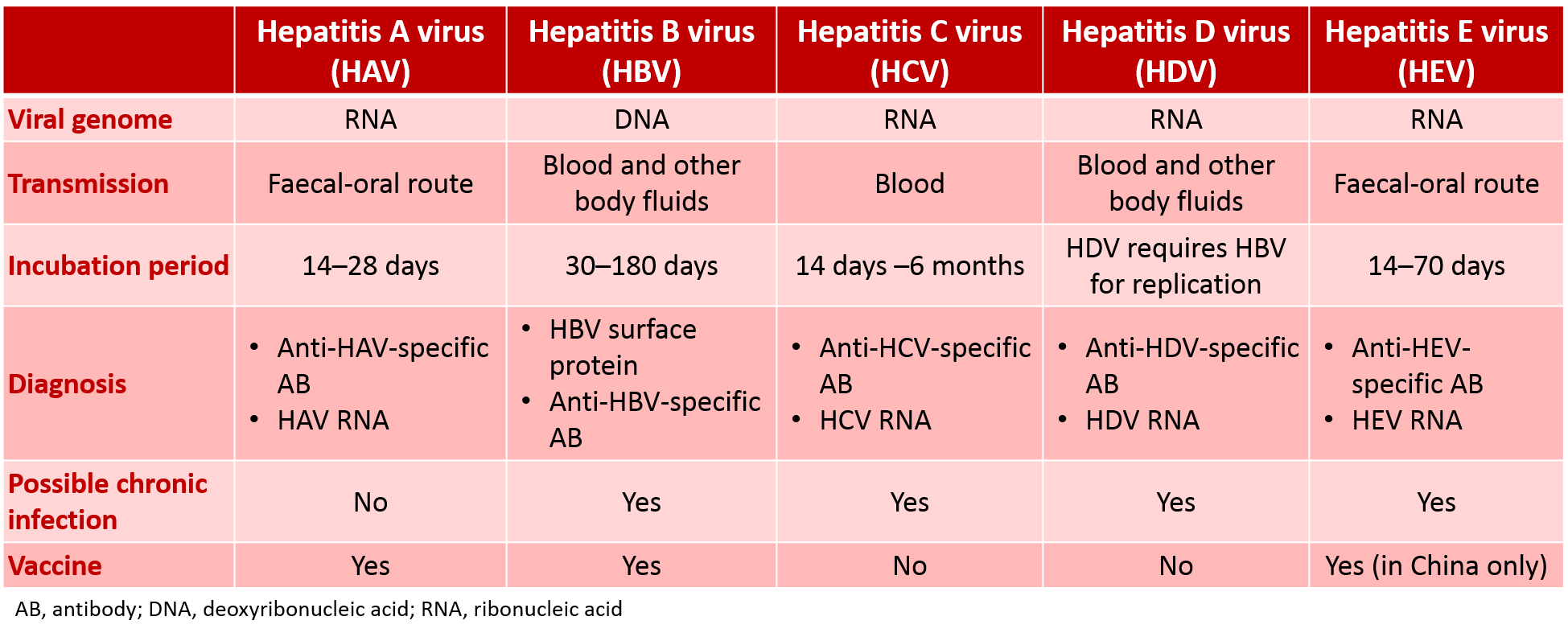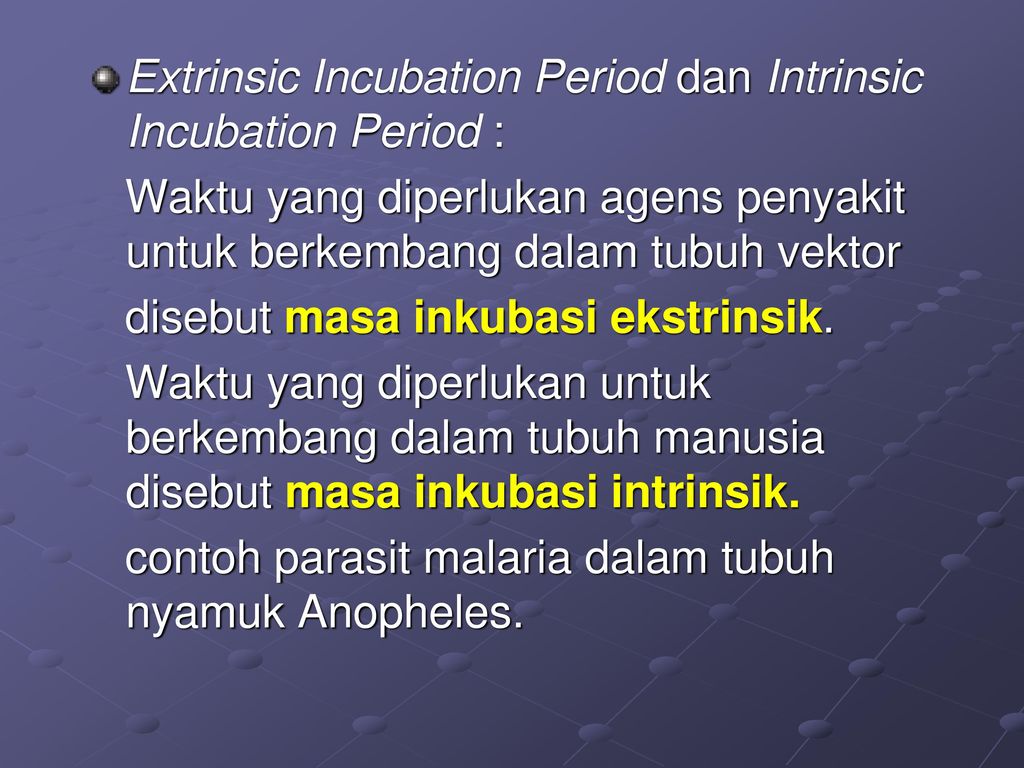What is the incubation period for malaria. Malaria Incubation Period: Understanding the Timeline from Infection to Symptoms
How long does it take for malaria symptoms to appear after infection. What factors influence the incubation period of malaria. Why does the malaria incubation period vary for different Plasmodium species. Can malaria symptoms appear months after initial infection.
The Basics of Malaria: Cause, Transmission, and Global Impact
Malaria is a potentially life-threatening disease caused by parasites belonging to the Plasmodium genus. These parasites are transmitted to humans through the bites of infected female Anopheles mosquitoes. Despite significant progress in malaria control over the past decades, it remains a major global health concern, particularly in tropical and subtropical regions.
The World Health Organization (WHO) reports that in 2022, there were an estimated 247 million malaria cases worldwide, resulting in 619,000 deaths. Sub-Saharan Africa continues to bear the highest burden, accounting for approximately 95% of global malaria cases and 96% of malaria deaths.

Key Facts About Malaria Transmission
- Malaria is primarily transmitted through the bites of infected mosquitoes
- The Plasmodium parasite undergoes a complex life cycle involving both human and mosquito hosts
- Five Plasmodium species are known to cause malaria in humans: P. falciparum, P. vivax, P. ovale, P. malariae, and P. knowlesi
- P. falciparum is the most dangerous species, responsible for the majority of severe malaria cases and deaths
Understanding the Malaria Incubation Period
The incubation period of malaria refers to the time between the initial infection (usually through a mosquito bite) and the onset of symptoms. This period can vary significantly depending on several factors, including the Plasmodium species responsible for the infection.
Typical Incubation Periods for Different Malaria Species
- P. falciparum: 9-14 days
- P. vivax: 12-18 days
- P. ovale: 12-18 days
- P. malariae: 18-40 days
- P. knowlesi: 9-12 days
It’s important to note that these are average incubation periods, and individual cases may vary. In some instances, symptoms may appear as early as 7 days after infection or as late as several months or even years later, particularly with P. vivax and P. ovale infections.

Factors Influencing the Malaria Incubation Period
Several factors can affect the length of the malaria incubation period:
- Plasmodium species: As mentioned earlier, different species have varying typical incubation periods.
- Parasite load: The number of parasites initially introduced into the bloodstream can influence how quickly symptoms develop.
- Host immunity: Individuals with prior exposure to malaria may have partial immunity, potentially leading to longer incubation periods or milder initial symptoms.
- Chemoprophylaxis: The use of antimalarial drugs for prevention can delay the onset of symptoms or suppress them entirely.
- Genetic factors: Certain human genetic variations may affect susceptibility to malaria and the course of infection.
The Phenomenon of Dormant Liver Stages
Some Plasmodium species, notably P. vivax and P. ovale, can enter a dormant stage in the liver called hypnozoites. These dormant parasites can reactivate weeks, months, or even years after the initial infection, leading to delayed onset of symptoms or relapses.
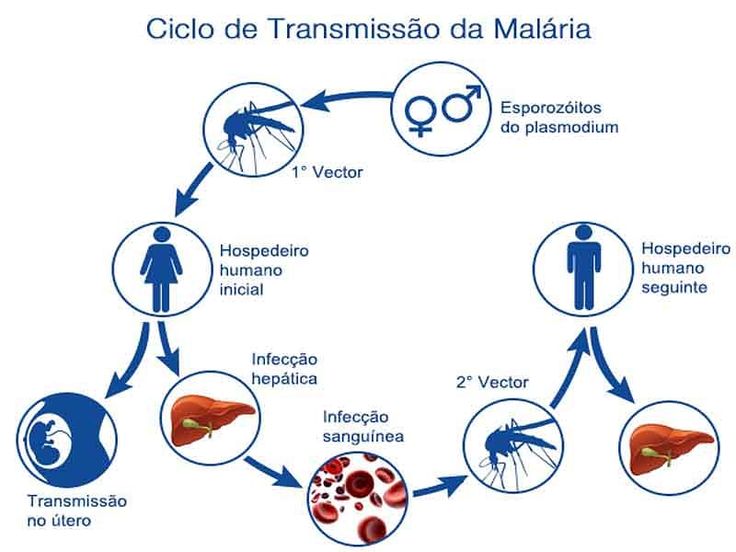
Implications of Hypnozoites for Malaria Incubation
- Extended incubation periods: Symptoms may not appear until months after the initial infection
- Risk of relapse: Individuals may experience multiple episodes of malaria from a single infection
- Challenges for elimination: Dormant liver stages complicate efforts to eliminate malaria in endemic areas
Recognizing Malaria Symptoms: When to Seek Medical Attention
Given the variable incubation period of malaria, it’s crucial to be aware of the symptoms and seek prompt medical attention if they occur, especially after travel to or residence in malaria-endemic areas. Common malaria symptoms include:
- Fever
- Chills and sweating
- Headache
- Fatigue
- Muscle aches
- Nausea and vomiting
- Diarrhea
In severe cases, malaria can lead to complications such as cerebral malaria, severe anemia, acute respiratory distress syndrome, and organ failure. Prompt diagnosis and treatment are essential to prevent these life-threatening complications.
Diagnosis and Treatment: Navigating the Challenges of Delayed Onset
The variable incubation period of malaria can pose challenges for diagnosis, especially in non-endemic areas where healthcare providers may not immediately suspect malaria in patients presenting with fever. This underscores the importance of providing a thorough travel history to healthcare providers.
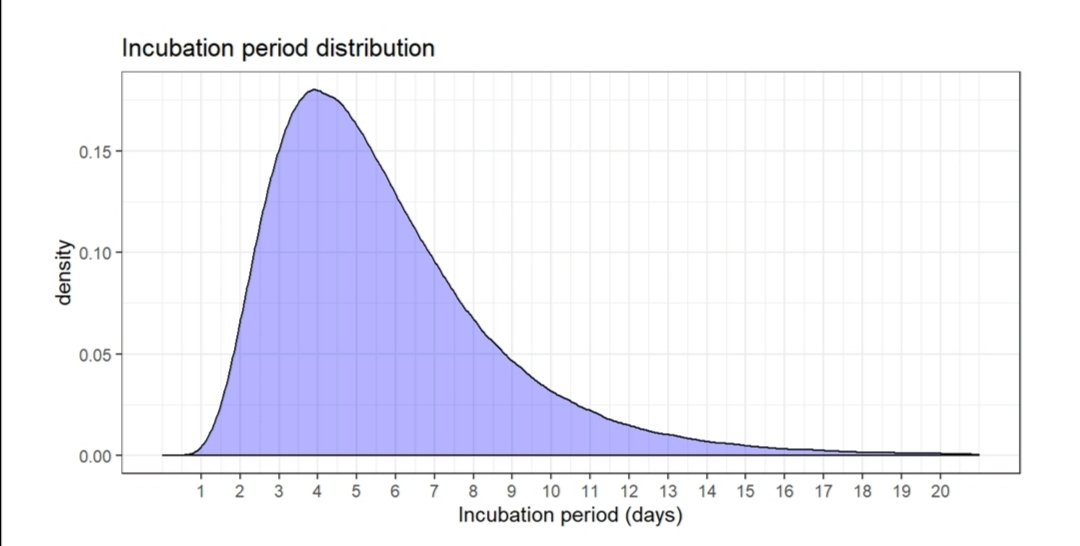
Diagnostic Approaches for Malaria
- Microscopy: Examination of blood smears remains the gold standard for malaria diagnosis
- Rapid diagnostic tests (RDTs): Provide quick results but may have limitations in detecting low-level parasitemia
- Polymerase chain reaction (PCR): Highly sensitive method for detecting and identifying Plasmodium species
- Serology: Can detect past infections but not typically used for acute diagnosis
Treatment for malaria depends on the infecting Plasmodium species, the severity of symptoms, and local drug resistance patterns. Artemisinin-based combination therapies (ACTs) are the current first-line treatment for uncomplicated P. falciparum malaria in most endemic regions.
Prevention Strategies: Addressing the Incubation Period Challenge
Given the potential for delayed onset of symptoms, prevention strategies play a crucial role in malaria control. These strategies must account for the variable incubation period and the possibility of relapses due to dormant liver stages.

Key Prevention Approaches
- Vector control: Use of insecticide-treated bed nets and indoor residual spraying to reduce mosquito populations
- Chemoprophylaxis: Administration of antimalarial drugs to prevent infection or suppress symptoms
- Vaccination: The RTS,S/AS01 vaccine has been recommended by WHO for use in children in areas with moderate to high P. falciparum transmission
- Education: Raising awareness about malaria symptoms and the importance of seeking prompt medical attention
For travelers to malaria-endemic areas, chemoprophylaxis is typically recommended to start before travel, continue throughout the stay, and extend for a period after returning home. This approach helps address the risk of delayed symptom onset due to the incubation period.
The Role of Incubation Period in Malaria Elimination Efforts
Understanding the incubation period of malaria is crucial for global elimination efforts. The potential for delayed onset of symptoms and relapses due to dormant liver stages presents challenges for surveillance and control programs.

Implications for Malaria Elimination Strategies
- Extended surveillance periods: Monitoring for potential cases must continue well beyond the initial exposure period
- Targeted interventions: Addressing hypnozoites through mass drug administration or targeted treatment of at-risk populations
- Cross-border collaboration: Coordinating efforts to prevent reintroduction of malaria in areas approaching elimination
Innovative approaches, such as genetically modified mosquitoes and novel drug therapies targeting liver stages, are being explored to address these challenges and accelerate progress towards malaria elimination.
Future Directions: Research and Innovation in Understanding Malaria Incubation
Ongoing research aims to deepen our understanding of the malaria incubation period and develop new tools to address its challenges. Some promising areas of investigation include:
- Biomarkers for early detection: Identifying molecular signatures that could indicate a malaria infection before symptoms appear
- Improved diagnostic tools: Developing more sensitive and specific tests capable of detecting low-level parasitemia during the incubation period
- Novel drug therapies: Exploring compounds that can target dormant liver stages to prevent relapses
- Host-parasite interactions: Unraveling the complex interplay between the human immune system and Plasmodium parasites during the incubation period
- Mathematical modeling: Refining models to better predict the impact of incubation periods on malaria transmission dynamics and control strategies
These research efforts hold the potential to revolutionize our approach to malaria prevention, diagnosis, and treatment, ultimately contributing to the global goal of malaria elimination.

Conclusion: The Importance of Vigilance in the Face of Variable Incubation
The incubation period of malaria presents a complex challenge in the fight against this ancient disease. From the individual level, where delayed symptom onset can complicate diagnosis and treatment, to the global scale, where it impacts elimination strategies, understanding and addressing the implications of malaria’s incubation period is crucial.
As we continue to make progress in malaria control and elimination, maintaining awareness of the potential for delayed onset of symptoms and the risk of relapses remains essential. This vigilance, combined with ongoing research and innovation, will be key to overcoming the challenges posed by malaria’s variable incubation period and moving closer to a world free of this devastating disease.
By staying informed about the latest developments in malaria research and prevention strategies, individuals can protect themselves and contribute to broader efforts to combat this global health threat. As we look to the future, the promise of new tools and approaches offers hope for more effective management of malaria’s incubation period and, ultimately, its elimination as a public health concern.

Malaria – Symptoms & causes
Overview
Malaria is a disease caused by a parasite. The parasite is spread to humans through the bites of infected mosquitoes. People who have malaria usually feel very sick with a high fever and shaking chills.
While the disease is uncommon in temperate climates, malaria is still common in tropical and subtropical countries. Each year nearly 290 million people are infected with malaria, and more than 400,000 people die of the disease.
To reduce malaria infections, world health programs distribute preventive drugs and insecticide-treated bed nets to protect people from mosquito bites. The World Health Organization has recommended a malaria vaccine for use in children who live in countries with high numbers of malaria cases.
Protective clothing, bed nets and insecticides can protect you while traveling. You also can take preventive medicine before, during and after a trip to a high-risk area. Many malaria parasites have developed resistance to common drugs used to treat the disease.
Products & Services
Symptoms
Signs and symptoms of malaria may include:
- Fever
- Chills
- General feeling of discomfort
- Headache
- Nausea and vomiting
- Diarrhea
- Abdominal pain
- Muscle or joint pain
- Fatigue
- Rapid breathing
- Rapid heart rate
- Cough
Some people who have malaria experience cycles of malaria “attacks.” An attack usually starts with shivering and chills, followed by a high fever, followed by sweating and a return to normal temperature.
Malaria signs and symptoms typically begin within a few weeks after being bitten by an infected mosquito. However, some types of malaria parasites can lie dormant in your body for up to a year.
When to see a doctor
Talk to your doctor if you experience a fever while living in or after traveling to a high-risk malaria region. If you have severe symptoms, seek emergency medical attention.
If you have severe symptoms, seek emergency medical attention.
Causes
Malaria is caused by a single-celled parasite of the genus plasmodium. The parasite is transmitted to humans most commonly through mosquito bites.
Mosquito transmission cycle
Malaria transmission cycle
Malaria spreads when a mosquito becomes infected with the disease after biting an infected person, and the infected mosquito then bites a noninfected person. The malaria parasites enter that person’s bloodstream and travel to the liver. When the parasites mature, they leave the liver and infect red blood cells.
- Uninfected mosquito. A mosquito becomes infected by feeding on a person who has malaria.
- Transmission of parasite. If this mosquito bites you in the future, it can transmit malaria parasites to you.
- In the liver. Once the parasites enter your body, they travel to your liver — where some types can lie dormant for as long as a year.

- Into the bloodstream. When the parasites mature, they leave the liver and infect your red blood cells. This is when people typically develop malaria symptoms.
- On to the next person. If an uninfected mosquito bites you at this point in the cycle, it will become infected with your malaria parasites and can spread them to the other people it bites.
Other modes of transmission
Because the parasites that cause malaria affect red blood cells, people can also catch malaria from exposure to infected blood, including:
- From mother to unborn child
- Through blood transfusions
- By sharing needles used to inject drugs
Risk factors
The greatest risk factor for developing malaria is to live in or to visit areas where the disease is common. These include the tropical and subtropical regions of:
- Sub-Saharan Africa
- South and Southeast Asia
- Pacific Islands
- Central America and northern South America
The degree of risk depends on local malaria control, seasonal changes in malaria rates and the precautions you take to prevent mosquito bites.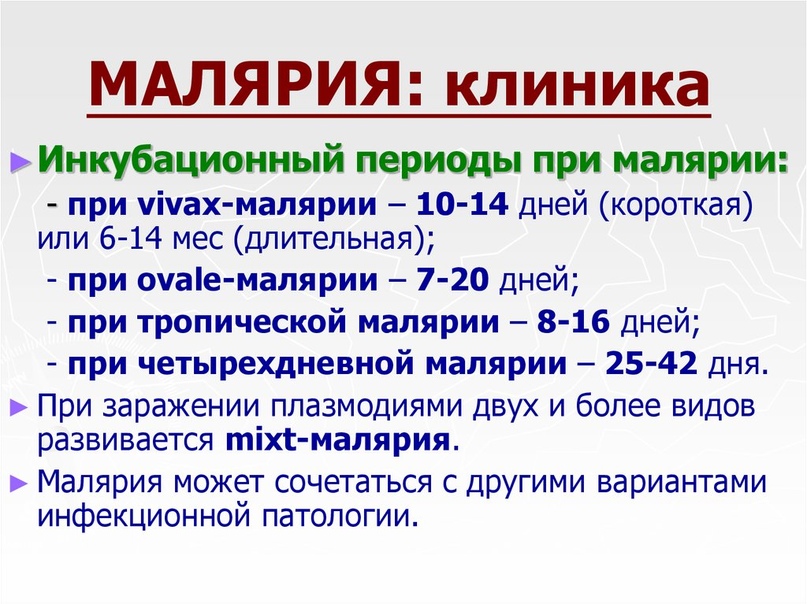
Risks of more-severe disease
People at increased risk of serious disease include:
- Young children and infants
- Older adults
- Travelers coming from areas with no malaria
- Pregnant women and their unborn children
In many countries with high malaria rates, the problem is worsened by lack of access to preventive measures, medical care and information.
Immunity can wane
Residents of a malaria region may be exposed to the disease enough to acquire a partial immunity, which can lessen the severity of malaria symptoms. However, this partial immunity can disappear if you move to a place where you’re no longer frequently exposed to the parasite.
Complications
Malaria can be fatal, particularly when caused by the plasmodium species common in Africa. The World Health Organization estimates that about 94% of all malaria deaths occur in Africa — most commonly in children under the age of 5.
Malaria deaths are usually related to one or more serious complications, including:
- Cerebral malaria. If parasite-filled blood cells block small blood vessels to your brain (cerebral malaria), swelling of your brain or brain damage may occur. Cerebral malaria may cause seizures and coma.
- Breathing problems. Accumulated fluid in your lungs (pulmonary edema) can make it difficult to breathe.
- Organ failure. Malaria can damage the kidneys or liver or cause the spleen to rupture. Any of these conditions can be life-threatening.
- Anemia. Malaria may result in not having enough red blood cells for an adequate supply of oxygen to your body’s tissues (anemia).
- Low blood sugar. Severe forms of malaria can cause low blood sugar (hypoglycemia), as can quinine — a common medication used to combat malaria. Very low blood sugar can result in coma or death.
Malaria may recur
Some varieties of the malaria parasite, which typically cause milder forms of the disease, can persist for years and cause relapses.
Prevention
If you live in or are traveling to an area where malaria is common, take steps to avoid mosquito bites. Mosquitoes are most active between dusk and dawn. To protect yourself from mosquito bites, you should:
- Cover your skin. Wear pants and long-sleeved shirts. Tuck in your shirt, and tuck pant legs into socks.
- Apply insect repellent to skin. Use an insect repellent registered with the Environmental Protection Agency on any exposed skin. These include repellents that contain DEET, picaridin, IR3535, oil of lemon eucalyptus (OLE), para-menthane-3,8-diol (PMD) or 2-undecanone. Do not use a spray directly on your face. Do not use products with oil of lemon eucalyptus (OLE) or p-Menthane-3,8-diol (PMD) on children under age 3.
- Apply repellent to clothing. Sprays containing permethrin are safe to apply to clothing.
- Sleep under a net. Bed nets, particularly those treated with insecticides, such as permethrin, help prevent mosquito bites while you are sleeping.

Preventive medicine
If you’ll be traveling to a location where malaria is common, talk to your doctor a few months ahead of time about whether you should take drugs before, during and after your trip to help protect you from malaria parasites.
In general, the drugs taken to prevent malaria are the same drugs used to treat the disease. What drug you take depends on where and how long you are traveling and your own health.
Vaccine
The World Health Organization has recommended a malaria vaccine for use in children who live in countries with high numbers of malaria cases.
Researchers are continuing to develop and study malaria vaccines to prevent infection.
Facts about malaria
Malaria is caused by Plasmodium parasites. Four Plasmodium species (Plasmodium falciparum, Plasmodium vivax, Plasmodium ovale and Plasmodium malariae) give disease in humans, and humans are their only relevant reservoir.
Transmission requires an intermediate mosquito (anopheles) host, which is found worldwide. Following exposure (an infected mosquito bite) the incubation period varies between one and four weeks in most cases. Depending on the plasmodium species involved, much longer incubation periods are possible.
Following exposure (an infected mosquito bite) the incubation period varies between one and four weeks in most cases. Depending on the plasmodium species involved, much longer incubation periods are possible.
Once the Plasmodia multiply inside the red blood cells, fever and multi-organ disease may ensue, which can be life-threatening when P. falciparum is involved. Symptoms are much reduced if the patient is semi-immune by repeated previous infection. Several drugs are available for both treatment and prophylaxis.
During the 20th century, malaria was eradicated from many temperate areas, including the whole of the EU. As a result, the disease is now essentially limited to tropical countries. With global climate change, the potential for the reappearance of malaria in countries where it was previously eradicated exists but is relatively small. Anopheles mosquitoes are in fact still present in those areas, including in Europe.
Due to the large number of imported cases in Europe, malaria is mainly a travel medicine issue. Nonetheless, ‘airport malaria’ is sometimes reported in relation to the inadvertent transport of infected mosquitoes from endemic areas.
Nonetheless, ‘airport malaria’ is sometimes reported in relation to the inadvertent transport of infected mosquitoes from endemic areas.
Name and nature of infecting organism
Malaria is an acute or subacute infectious disease caused by one of four protozoan species of the genus Plasmodium: P. falciparum, P. vivax, P. ovale, or P. malariae, mainly transmitted by Anopheles mosquitoes. Occasionally, transmission occurs by blood transfusion, organ transplantation, needle-sharing, or congenitally from mother to foetus.
Malaria is one of the major world public health problems, causing 350-500 million infections worldwide and approximately 1 million deaths annually. Malaria transmission occurs in large areas of Central and South America, Africa, Asia, Eastern Europe, and the South Pacific. In endemic areas such as tropical Africa, the incidence of malaria is higher in children younger than five years, due to low acquired immunity.
Clinical features
The clinical presentation of malaria depends very much on the pattern and intensity of malaria transmission in the area of residence, which determines the degree of protective immunity acquired and, in turn, the clinical disease profile.
The incubation period mainly varies between 7 and 15 days, but long incubation periods of several months have been observed, depending on patients and Plasmodium species. Malaria is characterised by fever and influenza-like symptoms, including chills, headache, myalgia, and malaise; these symptoms can occur at intervals. Malaria may be associated with anaemia and jaundice, and P. falciparum infections can cause seizures, mental confusion, kidney failure, coma, and death, particularly in young children.
Transmission
Reservoir
There is no animal reservoir for malaria parasites; it is a purely human disease.
Transmission mode
All four human Plasmodium species are transmitted by the bite of an infected female Anopheles mosquito.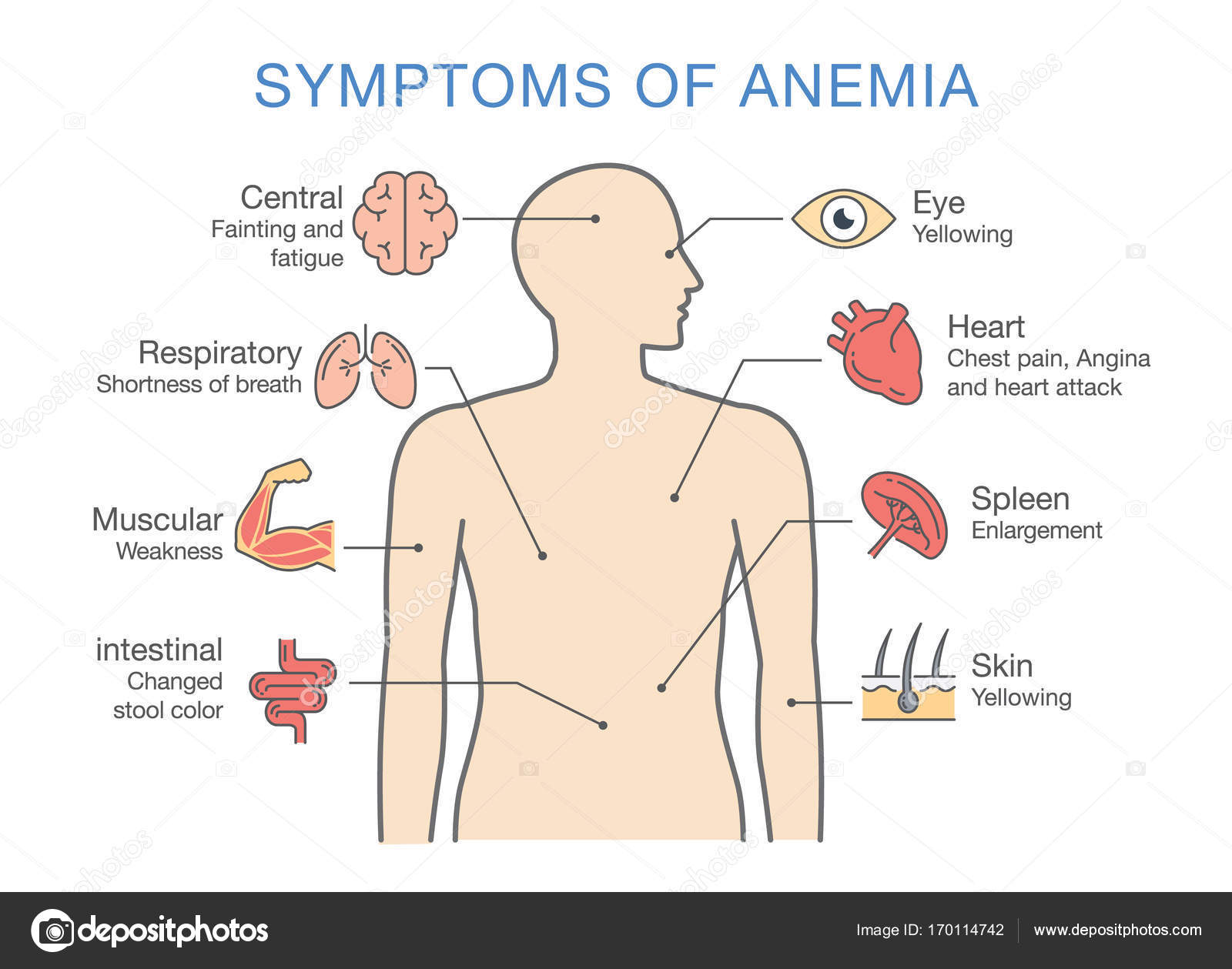 About 60–100 anopheline species are able to transmit malaria in the world.
About 60–100 anopheline species are able to transmit malaria in the world.
Infected humans remain infectious to mosquitoes as long as they carry mature gametocyte forms of plasmodium. This period depends on the Plasmodium species, on the immune status of the patients, and on treatment provided; in endemic areas it generally lasts for several weeks.
Risk groups
In endemic areas, populations at higher risk of severe malaria are children under five years of age and pregnant women. In unstable or low endemic areas, as well as in travellers from non-malaria regions, all ages are at risk.
Prevention measures
Prevention of malaria is currently based on two complementary methods: chemoprophylaxis and protection against mosquito bites. While several malaria vaccines are under development, none is available yet.
Chemoprophylaxis
In Europe, malaria chemoprophylaxis is only for travellers to malaria endemic countries, which are classified in three (or four) groups, to determine which drug is recommended for chemoprophylaxis. The choice of drugs depends on the travel destination, the duration of potential exposure to vectors, parasite resistance pattern, level and seasonality of transmission, age and pregnancy. In endemic countries, chemoprophylaxis could also be recommended for autochthonous young children and pregnant women, depending on endemicity level and seasonality of transmission.
The choice of drugs depends on the travel destination, the duration of potential exposure to vectors, parasite resistance pattern, level and seasonality of transmission, age and pregnancy. In endemic countries, chemoprophylaxis could also be recommended for autochthonous young children and pregnant women, depending on endemicity level and seasonality of transmission.
Personal protection measures against mosquito bites
Because of the nocturnal feeding habits of most of Anopheles mosquitoes, malaria transmission occurs primarily at night. Personal protective measures to reduce the risk of mosquito bites include the use of mosquito bed nets (preferably insecticide-treated nets), sleeping or resting in screened or air-conditioned rooms, the wearing of clothes that cover most of the body, and the use of mosquito repellent in accordance with the instructions indicated on the product label.
Mosquito control
Vector control measures depend on vector species, mosquito biology, epidemiological context, cost and acceptability by populations. The main current measures are focused on reduction of the contact between mosquitoes and humans, the destruction of larvae by environmental management and the use of larvicides or mosquito larvae predators, and destruction of adult mosquitoes by indoor residual spraying and insecticide-treated bed nets.
The main current measures are focused on reduction of the contact between mosquitoes and humans, the destruction of larvae by environmental management and the use of larvicides or mosquito larvae predators, and destruction of adult mosquitoes by indoor residual spraying and insecticide-treated bed nets.
Diagnosis
The gold standard for laboratory confirmation of malaria remains the identification of malaria parasites in blood films. Alternate methods for laboratory diagnosis include 1) antigen detection using rapid diagnostic tests, a useful alternative in situations where reliable microscopic diagnosis is not available; 2) molecular diagnosis, which is more accurate than microscopy but also more expensive and (currently still) requiring a specialised laboratory; and 3) serology, using indirect immuno-fluorescence (IFA) or enzyme-linked immuno-sorbent assay (ELISA). Serology does not detect current infection but rather measures past malaria experience.
Management and treatment
Although malaria can be fatal, illness and death from malaria are largely preventable. Early diagnosis and prompt treatment are the basic elements of malaria control. Anti-malarial treatment policies vary between countries, and depend on the epidemiology of the disease, transmission, patterns of drug resistance and political and economic contexts. There is no universal treatment scheme. The drugs currently available for malaria treatment include chloroquine, amodiaquine, primaquine sulfadoxine-pyrimethamine, mefloquine, atovaquone-proguanil, quinine, doxycycline, and artemisin derivatives often used in combination therapy.
Early diagnosis and prompt treatment are the basic elements of malaria control. Anti-malarial treatment policies vary between countries, and depend on the epidemiology of the disease, transmission, patterns of drug resistance and political and economic contexts. There is no universal treatment scheme. The drugs currently available for malaria treatment include chloroquine, amodiaquine, primaquine sulfadoxine-pyrimethamine, mefloquine, atovaquone-proguanil, quinine, doxycycline, and artemisin derivatives often used in combination therapy.
Key areas of uncertainty
Research into an effective vaccine is the subject of an ongoing international effort. Diagnostics to ensure rapid detection of infection, as well as the parasite’s resistance to the available drugs and the vector’s resistance to the available insecticides, are also the focus of continuing investigations.
References
- Baird JK. Effectiveness of antimalarial drugs. N Engl J Med 2005;352:1565-77.

- Matuschewski and Mueller.. Vaccines against malaria – an update. FEBS J 2007;274(18):4680-7.
- Shanks GD, Edstein MD. Modern malaria chemoprophylaxis. Drugs 2005;65:2091-110.
- WHO. Malaria Vector Control and Personal Protection. Report of a WHO Study Group, WHO Technical Report Series 2006; no 936.
- WHO. International Travel and Health. Geneva: WHO edition; 2007.
What you need to know about malaria
Ministry of Health of the Astrakhan Region
Center for Medical Prevention
Memo for the population.
WHAT YOU NEED TO KNOW ABOUT MALARIA!
MALARIA is a severe parasitic disease widespread in countries with a tropical and subtropical climate (Asia Minor and Southeast, Africa, South America) and neighboring countries (Azerbaijan, Armenia, Uzbekistan, Tajikistan, Georgia ). Malaria is characterized by attacks of fever (fever), anemia, enlargement of the liver and spleen .
Infection occurs when bitten by malarial mosquitoes. There are 4 types of malaria: tropical, three-day, four-day and oval malaria. The most severe is the tropical form, common in African countries.
According to the World Health Organization, at present, 82 countries of the world are highly endemic for malaria and are in the process of fighting it, and only 16 countries have achieved the elimination of malaria in their territories through anti-epidemic (preventive) measures, and 27 countries have received the status of ” free from malaria”, confirmed by the WHO certificate. Russia is represented in the group of countries directing efforts to prevent local transmission of malaria.
Malaria is transmitted from a sick person to a healthy person through the bites of female mosquitoes. In addition, there are two more ways of infection – through blood transfusion and intrauterine, when a woman with malaria infects her unborn child. Entered into the human body during the bite of malarial mosquitoes, the parasites circulate in the blood, and then are carried to the liver, in the cells of which they begin their development.
The incubation period (the period from the moment of infection to the onset of the first clinical symptoms) ranges from 7 days to 1 month (in case of a tropical form of malaria, the incubation period can last up to 3 years).
Signs of the disease – the disease begins acutely: weakness, severe headache, chills appear. Then recurring attacks of fever begin, in which the body temperature rises to 40 ° and above, and lasts for several hours. The fever is accompanied by severe chills; at the end of the attack marked sweating. Attacks are repeated regularly – after a certain time (every other day, two or three days later). When such attacks occur, you should immediately seek medical help.
Tropical malaria the most severe form of malaria. The incubation period most often ranges from 8 to 16 days. Headache, fatigue, nausea, loss of appetite may occur 3-4 days before the development of the first clinical signs. The initial stages of the disease are characterized by severe chills, a feeling of heat, severe headache. In the absence of timely treatment, a fatal outcome occurs. Recovery depends on the correct selection of antimalarial drugs and the equipment of the clinic.
The initial stages of the disease are characterized by severe chills, a feeling of heat, severe headache. In the absence of timely treatment, a fatal outcome occurs. Recovery depends on the correct selection of antimalarial drugs and the equipment of the clinic.
Malaria parasites are found in the blood of a sick person and can only be detected by examining the blood under a microscope. Treatment of this dangerous disease is carried out taking into account the type of pathogen and its sensitivity to chemotherapy drugs.
Prevention of malaria.
All travelers to tropical countries in Africa, Southeast Asia, Central and South America are recommended to carry out specific prophylaxis of malaria by taking antimalarial chemicals. More detailed advice on dosages and regimens for taking antimalarial drugs can be obtained from the offices of infectious diseases in polyclinics at the place of residence.
It must be remembered that during a stay in a malaria-affected country and within 3 years after returning home, in case of any increase in temperature, you should immediately contact a medical institution, informing the doctor about the fact of staying in tropical countries endemic for malaria .
In addition to taking antimalarial drugs, it is necessary to remember about personal non-specific prevention of malaria: the use of repellents (mosquito repellents), in the absence of air conditioning in places of accommodation, windows and doors should be blocked, electric fumigators should be used to kill mosquitoes.
People living in areas endemic for malaria should observe the following recommendations during their stay in the outbreak:
- dress in tight, as close as possible, light-colored clothing when leaving the house after sunset;
- apply repellents to exposed areas of the body;
- sleep in rooms that exclude the penetration of blood-sucking insects;
- before going to bed, treat the room with an insecticidal spray or use fumigators;
- in the presence of a large number of mosquitoes and the impossibility of screening the windows, organize sleep under a canopy made of gauze and treated with insecticide.

Remember! Only early detection of malaria patients will help them recover and prevent the spread of infection among the surrounding population!
Follow all the rules for malaria prevention! Take care of yourself!
The material was prepared by
editorial and publishing department
GBUZ JSC “Center for Medical Prevention”
2015.
414024, Astrakhan,
sq. Freedom / st. Kotovskogo, d.2/6,
Tel. (fax) 8 (8512) 51-24-77,
e-mail: This email address is being protected from spambots. You must have JavaScript enabled to view.
Malaria and its prevention | Federal Budgetary Institution “Rostov Research Institute of Microbiology and Parasitology” of Rospotrebnadzor
Malaria and its prevention
Malaria (swamp fever, intermittent fever) is an acute infectious disease, which is characterized by the defeat of red blood cells by protozoan intracellular parasites of the genus Plasmodium (malarial plasmodium). It is transmitted through the bites of malarial mosquitoes of the genus Anopheles, through blood transfusions, or from mother to fetus during pregnancy. One bite of an infected mosquito is enough for a portion of sporozoites (spores) of the causative agent of malaria to enter the human blood or lymph along with its saliva. Next comes the complex life cycle of the malaria pathogen in the human body, the result of which is the manifestation of malaria in humans. At the same time, the blood of a person who has malaria becomes dangerous. A blood transfusion can cause infection in other people, or another mosquito can become infected when bitten.
It is transmitted through the bites of malarial mosquitoes of the genus Anopheles, through blood transfusions, or from mother to fetus during pregnancy. One bite of an infected mosquito is enough for a portion of sporozoites (spores) of the causative agent of malaria to enter the human blood or lymph along with its saliva. Next comes the complex life cycle of the malaria pathogen in the human body, the result of which is the manifestation of malaria in humans. At the same time, the blood of a person who has malaria becomes dangerous. A blood transfusion can cause infection in other people, or another mosquito can become infected when bitten.
How does malaria manifest itself?
Depending on the type of malaria pathogen, a person becomes infected with one of 4 forms of malaria – three-day malaria, four-day malaria, tropical and oval malaria. The most dangerous, which can lead to severe complications and death, is tropical malaria. The incubation period (from the moment of the bite to the first signs of the disease) – with tropical malaria is from 7 to 30 days, with other forms up to 14 months. After this, acute attacks of fever (primary attack) appear, which are replaced by a fever-free period. The number of attacks in primary malaria reaches 8-12. Then, in some cases, recovery occurs, but more often the disease again makes itself felt.
After this, acute attacks of fever (primary attack) appear, which are replaced by a fever-free period. The number of attacks in primary malaria reaches 8-12. Then, in some cases, recovery occurs, but more often the disease again makes itself felt.
A malarial attack consists of two phases – chills and sweating. The chill phase can last from several minutes to several hours, the body temperature during this period reaches 39-40 ° C and above, the skin acquires a pale or pale blue color, becomes cold, covered with pimples. During this phase, the patient suffers from a severe headache, increasing muscle pain, vomiting, thirst, and sometimes confusion and delirium. The growing heat causes a sharp reddening of the skin of the face, an accelerated heartbeat. After the end of this phase, there is a sharp sweating, while the body temperature drops below normal. The patient’s condition improves, only weakness remains. After a while, the attacks are repeated.
Immunity after malaria is formed slowly and almost does not protect against re-infection.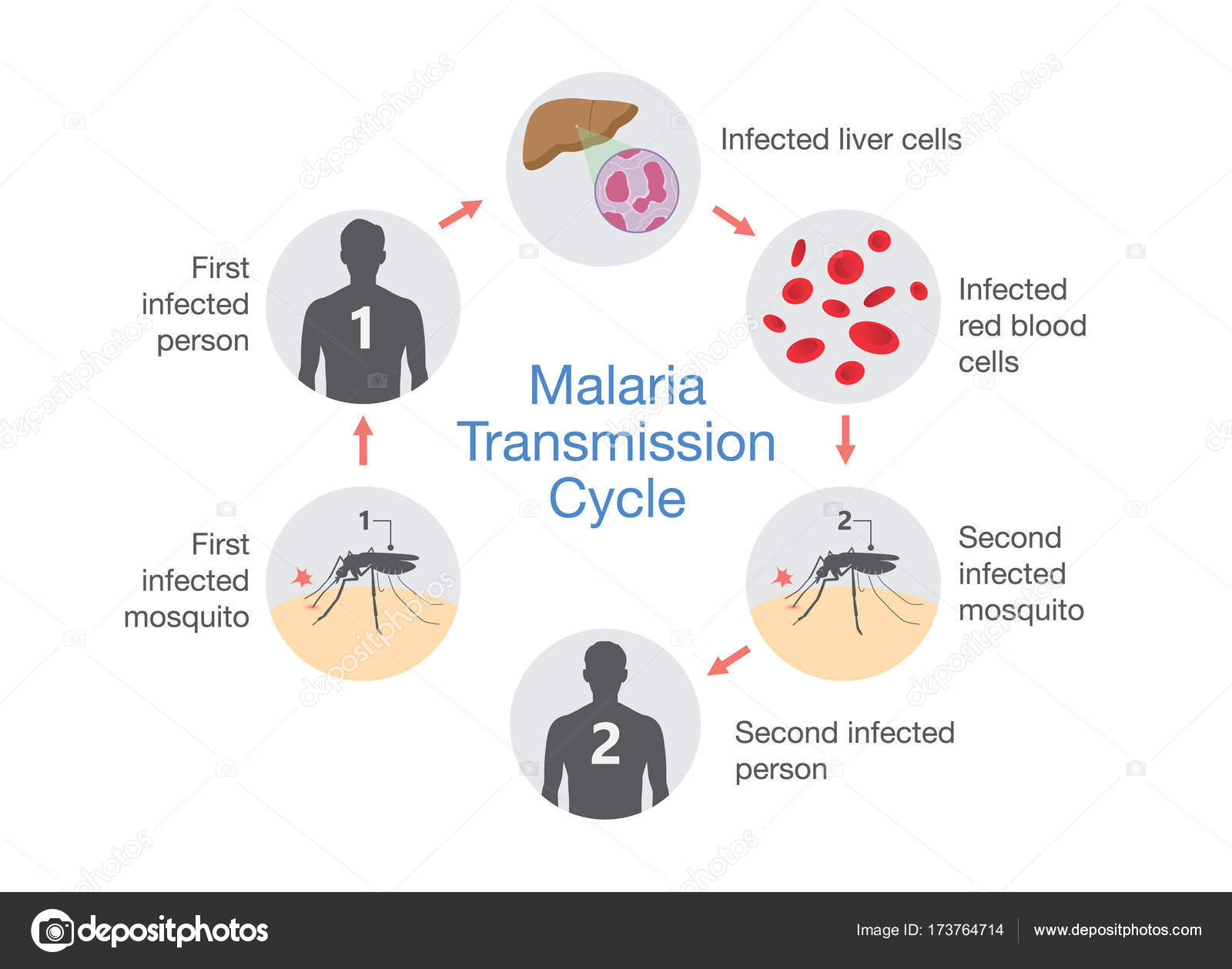 However, with re-infection, the disease is less severe.
However, with re-infection, the disease is less severe.
The diagnosis is made on the basis of laboratory tests and the detection of typical signs.
Epidemiology of malaria
As a result of the huge complex work, by 1960 malaria was practically eliminated in the USSR, but in the 70-80s, due to the expansion of interstate ties with the countries of Africa, Southeast Asia, and Latin America, a tendency towards an increase in the incidence of imported malaria began to be observed. There is a real threat of resumption of the transmission of this infection in the south of Russia, in the Volga region and other regions. The potential for malaria to spread is determined by the length of the mosquito transmission season.
Malaria occurs seasonally: in a temperate climate for 1.5-3 months, in subtropical regions -5-8 months, in the tropics – all year round.
How real is the threat of malaria within our country? Indeed, we do not seem to have typical malarial conditions – heat and tropical swamps.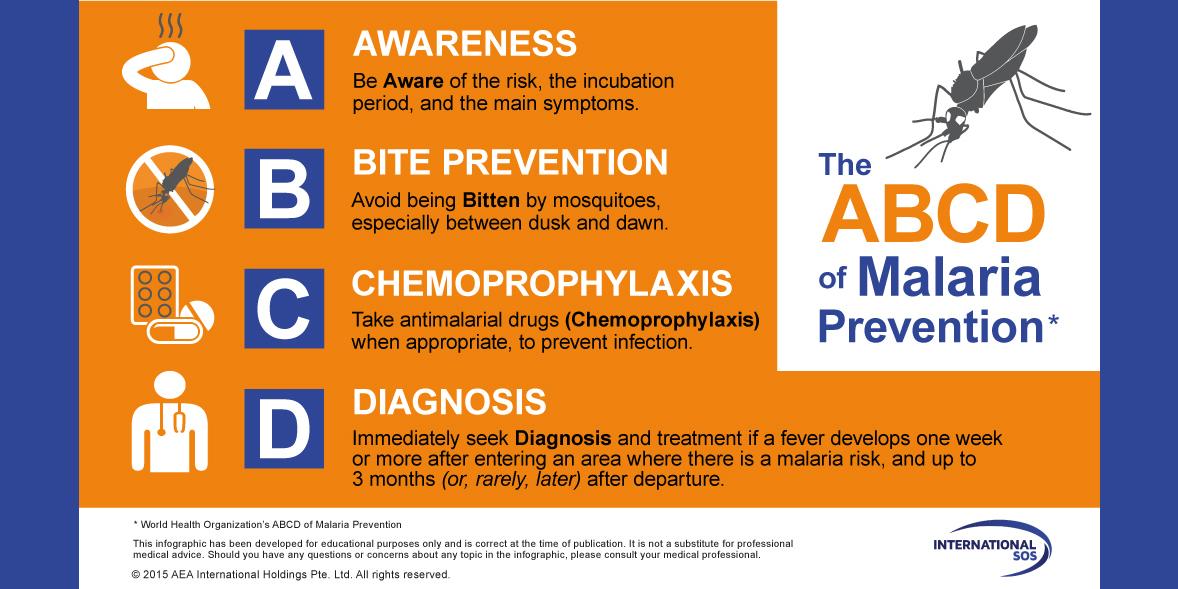 But the recent active human movements from north to south and back, tourist visits to the countries of Asia, Africa, Latin America can open a new chapter in the history of Russian malaria, especially since the climatic conditions in Russia do not in any way prevent mosquitoes – anopheles- carriers of malaria pathogens.
But the recent active human movements from north to south and back, tourist visits to the countries of Asia, Africa, Latin America can open a new chapter in the history of Russian malaria, especially since the climatic conditions in Russia do not in any way prevent mosquitoes – anopheles- carriers of malaria pathogens.
Malaria prevention
There are currently no vaccines against malaria. The main preventive measure is protection from mosquito bites. Therefore, the fight against malaria requires the active participation of each person. You need to make sure that open water does not stagnate near the house, protect your home by netting door and window openings with mosquito nets, preferably with special repellent impregnation (chemicals that repel mosquitoes). In areas dangerous for malaria (southern regions), it is better to be dressed and shod in light clothes at night. Clothing should be spacious with long sleeves, instead of shorts – trousers, instead of sandals – sneakers with socks.
The following repellents are used to protect against mosquitoes: Komarex, Biban, DEFI-plus, Evital, Taiga, Defizol, Arodet, Komarant, Defizol-2, etc.
Electrofumigators, mosquito coils, sprayers (aerosols) are used to treat the interior. Folk remedies that repel mosquitoes: the smells of cloves, eucalyptus, basil, anise – are used in the form of oils for application to the skin or adding a drop of oil to a fire source (fireplace, stove, fire, frying pan). In addition, you can use chamomile bouquets that will repel mosquitoes for 5-7 days. In a tablespoon of any cologne, you can add 8-10 drops of these oils and wipe the exposed areas of the body. To relieve itching after mosquito bites, you can use crushed leaves of bird cherry, mint, parsley, plantain, garlic clove, dandelion juice, green onion, soda solution (1 teaspoon of baking soda or ammonia in a glass of water), Vietnamese Asterisk balm.
Need to know!
- – Everyone traveling to countries with a tropical and subtropical climate is obliged to consult with a local doctor about the danger of contracting malaria, the need to take antimalarial drugs and the absence of contraindications to this group of drugs.



